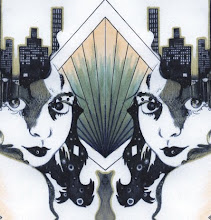
The story is a melancholic tale of young love and teenage suicide. Toru, who has lost his best friend, and Naoko, her childhood sweetheart, are united by their mutual loss and a confusing bond is formed. For him it is his first love, for her it is more the need to be loved. She freaks out and heads for the hills, whilst he is left in Tokyo in wanting, and from this entanglement the plot develops. Everything seems so unreal that it makes perfect sense for the film to adapt a dreamlike quality, and the scenery is awe inspiring.

When there is little dialogue, the wind whispers & blows, tugging at their clothes and hair, and rushing through the tall grass, trees sway, leaves rustle and crunch under toe, snow falls, shadows roll & water trickles. When there is a stillness between the characters, their emotions are personified by the elements & mother nature is scripted in to make some noise. Else Jonny Greenwood does an amazing job of the scoring too.

Aside from the wonder of nature, the styling of interiors is also stunning, colours merging from outside to in. Creating some drama to a scene, a curtain blows inside it’s window frame as the boy walks down his dormitory corridor, the rain is so loud you can sense an open door, and you almost feel the sun. Lemon is the light shining through the windows and jumping off glass objects in the room, sky blue her knitted hat, peach are the blossoms embroidered onto her cushion before young lovers lay on the carpet, and green, so much green.

If I were to talk about the fashion in this feature film, it would be about pristinely placed pastel knits, pointed collars and polo necks for boys, peter pan for girls & neatly matched skirts, lumber jackets in the wintry woods paired with hand knitted scarves, fabric patterns mimicking their almost garish decorative wallpapers.

For me, this film is more about the fashioning of the light, brilliant reflections and languid shadows. Even a plastic bowl has a heightened sense of beauty… like a Wolfgang Tillmans still life elevating the everyday, the placement of objects within the frame as well as their colour in relation to the characters outfits is very deliberate.

One of my favourite films ever is “In the Mood for love” directed by Wong Kar-Wai. The person tying these two films together is cinematographer Mark Ping Bin Lee. Carefully choreographed, the camera moves with the characters like a slow motion dance of longing looks and inhibited gestures between two characters drawn to eachother… yet not able to allow themselves to just fall in love. Meanwhile, their respective partners… their infidels… remain faceless, the only hint of them you get is his hand putting down the phone on the receiver, or the swish of her skirt passing by a tiled corridor.

Again, in this film the elements play a big part, and nature creeps in at any opportunity. There is a constant merging of the inside and outside, the camera breaking these boundaries by clever framing of scenes weaving in and out through doors and windows. In this image below, a vine creeps through Su’s open window, her daffodil print dress and floral curtains creating a carefully styled synergy with the nature knocking at her door.

Cheating hearts or cheated by the loss of a loved one, both movies swing between the melancholic and the magical, are stunning visually and have beautiful soundtracks. This speil is almost as epic as these films, so I’m going to wrap this blog up with a musical scoring from ‘In the mood for love’ by Shigeru Umebayashi called ‘Yumeji’s theme’...
...and meanwhile I will go back to humming norwegian wood
x



Awesome!!! Thanks for sharing
ReplyDelete